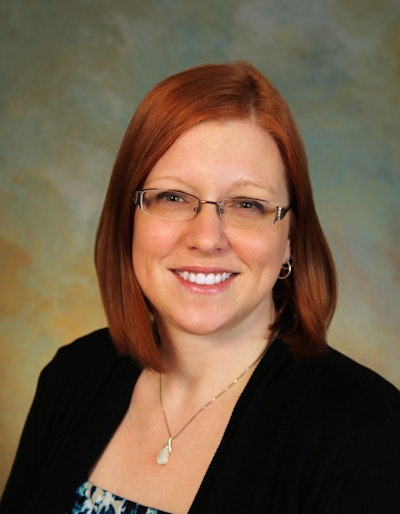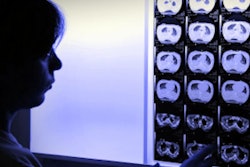
Now that the final Medicare conversion factor (CF) for 2022 of $34.6062 has been established following passage of the Protecting Medicare and American Farmers from Sequester Cuts Act, we can analyze the real impact that radiology practices can expect this year.
 Sandy Coffta.
Sandy Coffta.We reported recently that the final conversion factor is a 0.82% reduction from the 2021 rate. However, the conversion factor is not the only factor that affects the Medicare fee schedule.
The U.S. Centers for Medicare and Medicaid Services (CMS) annually revises the pricing of various procedure codes due to changes in practice expense, which generally affects the technical component (TC) more than the professional component (PC). Accordingly, radiologists will see a different overall result for services in a private office or imaging center than they will for hospital services.
The range of changes
The fee schedule for professional services includes a range from -19.71% for 74330, supervision and interpretation of endoscopic retrograde cholangiopancreatography (ERCP) to +22.74% for 38505 (needle biopsy or excision of lymph nodes), with most procedures varying only -0.82% as a result of the conversion factor. The range for global services runs from -11.95% for 76604 (ultrasound, chest) to +46.43% for 38505 (needle biopsy or excision of lymph nodes), with 146 codes having a negative adjustment and 101 codes having a positive adjustment. Of course, the extremes represent very low-volume procedures.
Performing a volume-weighted analysis1 on a composite compiled from our database, we found a decrease of 0.86% in overall professional component reimbursement and a decrease of 2.02% in overall global reimbursement. The global fees are more negatively impacted because they include the technical component, with the practice expense revaluation mentioned above.
The chart below illustrates what a typical full-service practice might find after performing its volume-weighted analysis.
| Hospital (PC) | Imaging center (Global) | |||
| Modality | $ Variance | % Variance | $ Variance | % Variance |
| General diagnostic | $ (14,666) | (0.86%) | $5,799 | 1.74% |
| CT | (59,845) | (1.05%) | (24,517) | (2.21%) |
| MRI | (7,992) | (0.40%) | (74,543) | (4.34%) |
| DEXA | (579) | (0.82%) | (1,601) | (1.72%) |
| Interventional | (8,750) | (0.59%) | (2,632) | (3.94%) |
| Evaluation & Mgt. | 156 | 0.16% | - | - |
| Mammography | (20,132) | (1.30%) | (24,069) | (1.68%) |
| Ultrasound | (8,170) | (1.05%) | (11,567) | (1.71%) |
| Duplex Doppler | 1,485 | 0.38% | (4,708) | (2.17%) |
| Nuclear medicine | (1,374) | (0.64%) | (5,769) | (4.30%) |
| PET* | (2,578) | (1.09%) | 12,993 | 1.88% |
| TOTAL | $(122,445) | (0.86%) | $(130,614) | (2.02%) |
The mix of modalities performed by the practice will affect its overall result. For example, an imaging center with all the listed modalities except for PET would see a decrease of 2.48% rather than 2.02% because it would not benefit from the projected increase in PET reimbursement. Similarly, a women's center with mammography, ultrasound and dual-energy x-ray absorptiometry (DEXA) might see a decrease of 1.69% for those modalities alone.
Sequestration returns in 2022
As we previously reported, the 2% sequester that was initiated in 2011 was suspended in 2020 and 2021 due to the COVID-19 public health emergency. It will be reinstated as of April 1, 2022, at the rate of 1%, and then increasing to 2% as of July 1, 2022. As a result, the variance figures we have reported will change as the year goes on.
| Period in 2022 | Sequester | Professional impact | Global impact |
| January-March | 0% | (0.86%) | (2.02%) |
| April-June | 1% | (1.85%) | (3.00%) |
| July-December | 2% | (2.84%) | (3.98%) |
| Overall | N/A | (2.10%) | (3.24%) |
The 2% sequester is scheduled to remain in place through 2030, and to increase during that year to make up for the period of suspension.
Conclusion
Understanding the annual changes in Medicare's fee schedules is useful when analyzing areas where the practice's revenue might be increasing or decreasing. Many commercial payers base their fees on the Medicare table, although not all of them make exactly the same changes, or at the same time, as Medicare does. The same volume-weighted analysis technique can be applied to commercial fee schedules, as well.
Sandy Coffta is the vice president of client services at Healthcare Administrative Partners.
The comments and observations expressed are those of the author and do not necessarily reflect the opinions of AuntMinnie.com.
1 The volume-weighted analysis process involves gathering data from the previous year that shows the number of times each procedure code was billed for Medicare patients. The procedure volumes are multiplied by the 2021 Medicare fee schedule rates in one column, and again by the 2022 Medicare fee schedule rates in another column. Totaling each column will reveal the total practice revenue for the previous year and the reimbursement that the practice could expect in the current year assuming the volume of each procedure is unchanged. The percentage increase or decrease can then be calculated.



















